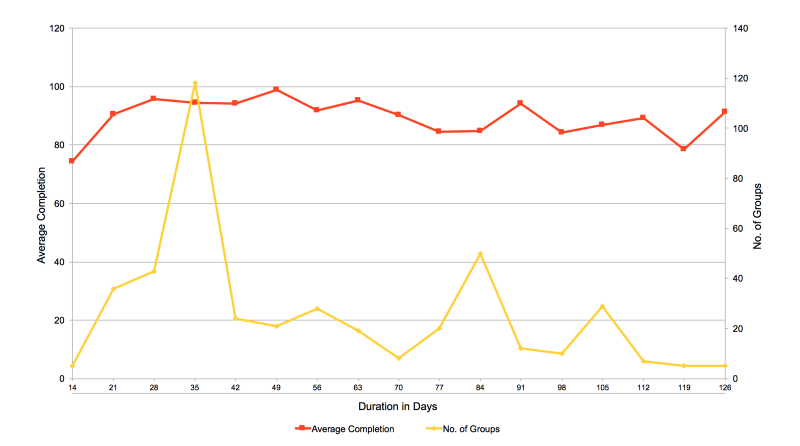The Return of the Cohort

The story of web-based learning, from the first recognized online program at the Open University 20 years ago

Recently, Nomadic’s COO, Tim Sarchet, and CTO, Jun Ho Kim, analyzed the data from 700 cohorts (each made up of 30 people) who entered into our training programs over the past two years. Their findings were pretty awesome — across the board, Nomadic’s average completion rate is 85%.
So, I set off on what I thought would be a relatively easy quest to compare our numbers to those of our competitors for a simple story: Nomadic is different, and Nomadic is more effective. But my story changed when, after 45 minutes of Googling (let’s be real, that’s a lot of minutes), it is impossibly difficult to find completion rates for online training courses.
There are TONS of articles sort of about completion rates, with headlines like eLearning Completion Rates: Why The Drama? and 5 Tips to Increase Your Course Completion Rates. There are even articles questioning the relevance of completion, which is sort of like teachers wondering if it matters that their students walk out halfway through class every day.
But where are the actual stats on this? Luckily one of the articles, 9 Ways to Increase Completion Rates of Your Online Course, has a number in the very first line, a number that’s hard to see. Intentional? Or am I overthinking? Regardless, it’s 13%. Yes, you read that correctly. 13% of people enrolled in online courses actually complete them.
I doubt that number is totally accurate, and I’m sure it doesn’t tell the whole story. How many of those courses are compliance related? How many are MOOCs associated with universities? How long and in-depth are these other courses compared to Nomadic’s? I don’t know.
What I do know is that completing Nomadic’s courses is not a passive activity. It’s not reading a page, taking a quiz, and moving on. Our learners must take quizzes, answer polls, write anywhere from 250–1000 words of their own thoughts, and interact with 20–25 others in comments to complete a course. It requires pretty much full attention. And learners love it.
What this now entire morning of research and analysis has told me is that the elearning industry almost definitely has unfortunately low completion rates across the board. For us, completion is just the most basic measurement of the success of a Nomadic learning experience. What we’re really interested in — along with everyone else — is engagement, social interactions, ROI conversations, and other advanced analytics. But for any of those measurements to matter, learners have to at least complete the program in significant numbers, which seems to be a problem throughout the industry.

The story of web-based learning, from the first recognized online program at the Open University 20 years ago

There are lots of things about personalized learning that we love. But it's not an answer to all of online learning's problems.

Discover how to leverage learning as a strategic tool for navigating transformation with our exclusive L&D Disruptors Toolkit. This essential guide is designed for forward-thinking leaders inside and outside of L&D who are ready to support their organizations through change and ensure long-term success.